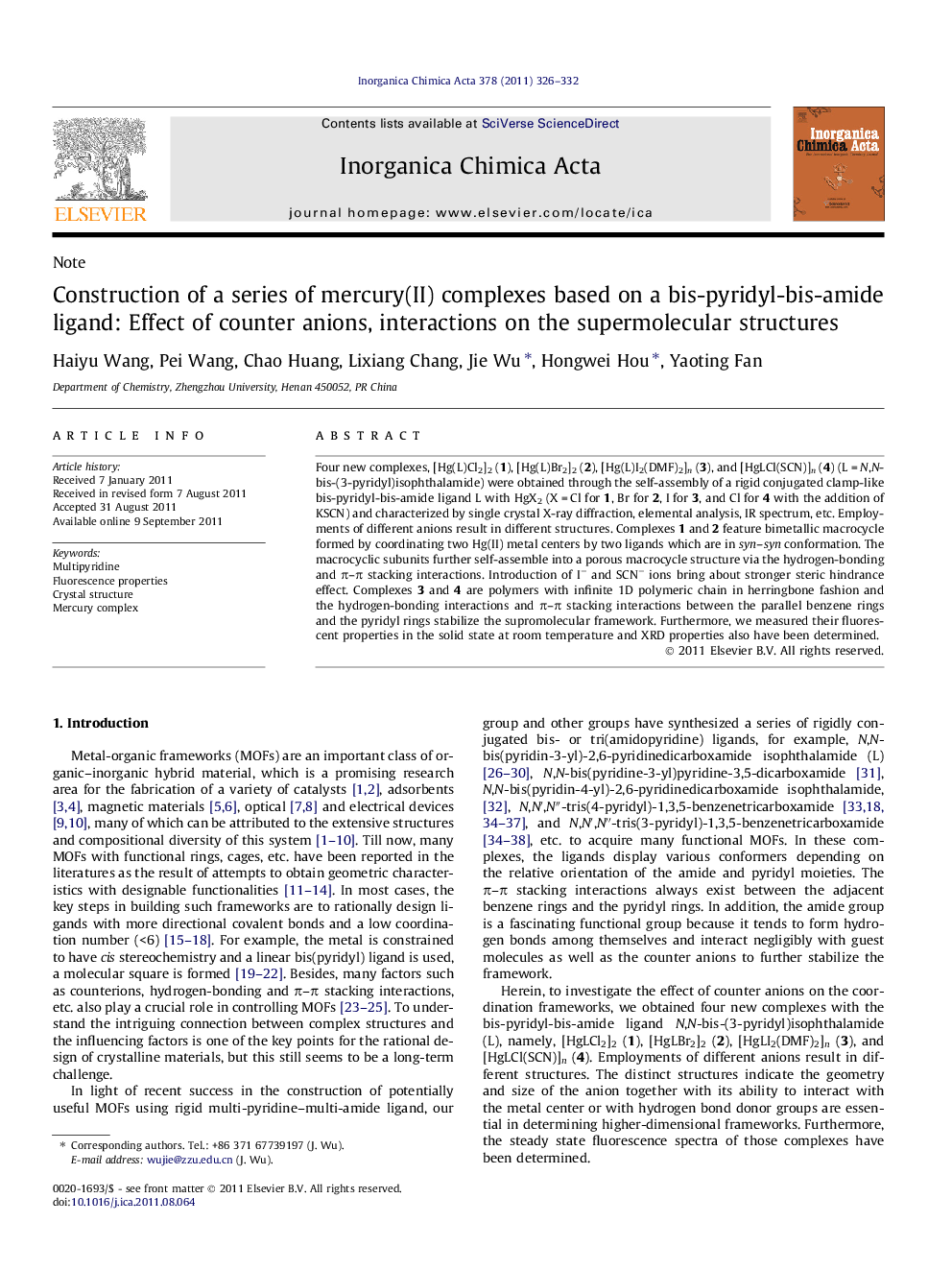| کد مقاله | کد نشریه | سال انتشار | مقاله انگلیسی | نسخه تمام متن |
|---|---|---|---|---|
| 1307549 | 975144 | 2011 | 7 صفحه PDF | دانلود رایگان |

Four new complexes, [Hg(L)Cl2]2 (1), [Hg(L)Br2]2 (2), [Hg(L)I2(DMF)2]n (3), and [HgLCl(SCN)]n (4) (L = N,N-bis-(3-pyridyl)isophthalamide) were obtained through the self-assembly of a rigid conjugated clamp-like bis-pyridyl-bis-amide ligand L with HgX2 (X = Cl for 1, Br for 2, I for 3, and Cl for 4 with the addition of KSCN) and characterized by single crystal X-ray diffraction, elemental analysis, IR spectrum, etc. Employments of different anions result in different structures. Complexes 1 and 2 feature bimetallic macrocycle formed by coordinating two Hg(II) metal centers by two ligands which are in syn–syn conformation. The macrocyclic subunits further self-assemble into a porous macrocycle structure via the hydrogen-bonding and π–π stacking interactions. Introduction of I− and SCN− ions bring about stronger steric hindrance effect. Complexes 3 and 4 are polymers with infinite 1D polymeric chain in herringbone fashion and the hydrogen-bonding interactions and π–π stacking interactions between the parallel benzene rings and the pyridyl rings stabilize the supromolecular framework. Furthermore, we measured their fluorescent properties in the solid state at room temperature and XRD properties also have been determined.
To investigate the effect of counter anions on the coordination frameworks, a serious of mercury(II) complexes were obtained. The distinct structures indicate the geometry and size of the anion together with its ability to interact with the metal center or with hydrogen bond donor groups are essential in determining higher-dimensional frameworks.Figure optionsDownload as PowerPoint slideHighlights
► Four new complexes based on the bis-pyridyl-bis-amide ligand have been synthesized.
► Replacement of different anions yields either discrete bimetallic macrocycle or 1D chain.
► We investigate the effect of counter anions and the interactions on the frameworks.
► Complexes 1–4 possess strong luminescence.
Journal: Inorganica Chimica Acta - Volume 378, Issue 1, 30 November 2011, Pages 326–332